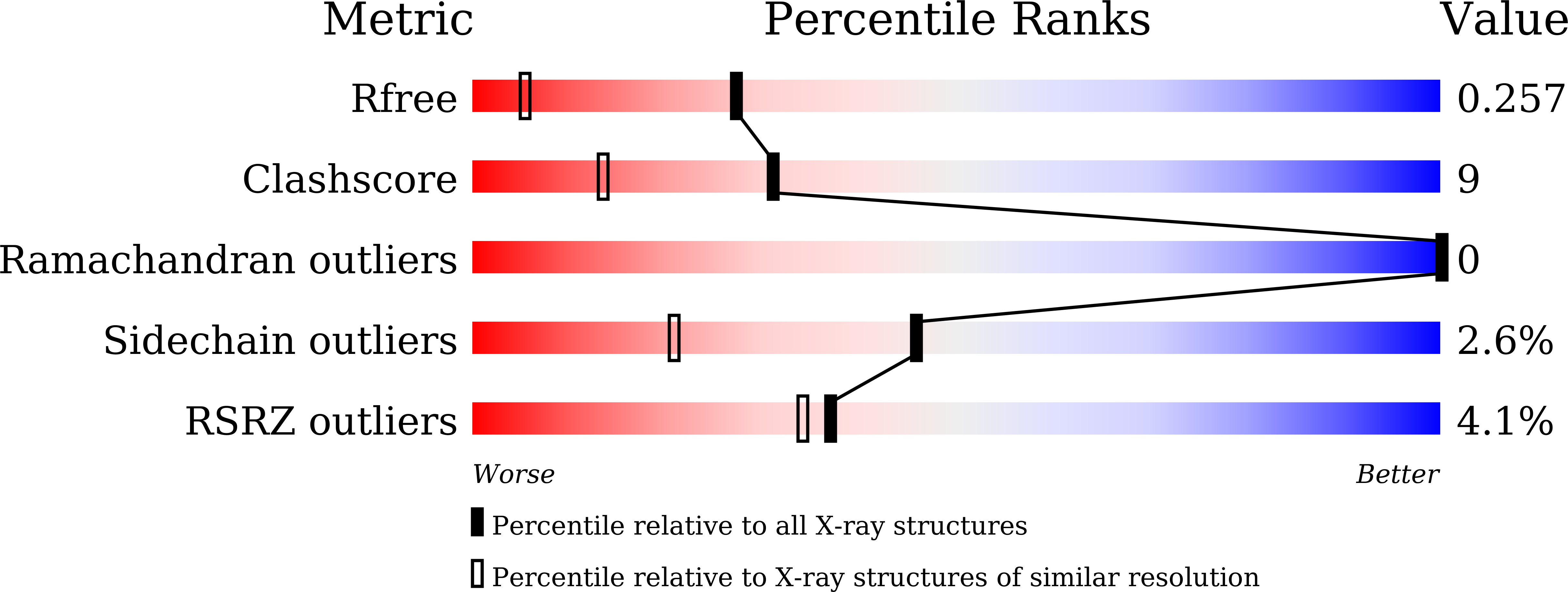Time-series transcriptomic screening of factors contributing to the cross-tolerance to UV radiation and anhydrobiosis in tardigrades.
Yoshida, Y., Satoh, T., Ota, C., Tanaka, S., Horikawa, D.D., Tomita, M., Kato, K., Arakawa, K.(2022) BMC Genomics 23: 405-405
- PubMed: 35643424
- DOI: https://doi.org/10.1186/s12864-022-08642-1
- Primary Citation of Related Structures:
7DBT, 7DBU - PubMed Abstract:
Tardigrades are microscopic animals that are capable of tolerating extreme environments by entering a desiccated state of suspended animation known as anhydrobiosis. While antioxidative stress proteins, antiapoptotic pathways and tardigrade-specific intrinsically disordered proteins have been implicated in the anhydrobiotic machinery, conservation of these mechanisms is not universal within the phylum Tardigrada, suggesting the existence of overlooked components. Here, we show that a novel Mn-dependent peroxidase is an important factor in tardigrade anhydrobiosis. Through time-series transcriptome analysis of Ramazzottius varieornatus specimens exposed to ultraviolet light and comparison with anhydrobiosis entry, we first identified several novel gene families without similarity to existing sequences that are induced rapidly after stress exposure. Among these, a single gene family with multiple orthologs that is highly conserved within the phylum Tardigrada and enhances oxidative stress tolerance when expressed in human cells was identified. Crystallographic study of this protein suggested Zn or Mn binding at the active site, and we further confirmed that this protein has Mn-dependent peroxidase activity in vitro. Our results demonstrated novel mechanisms for coping with oxidative stress that may be a fundamental mechanism of anhydrobiosis in tardigrades. Furthermore, localization of these sets of proteins mainly in the Golgi apparatus suggests an indispensable role of the Golgi stress response in desiccation tolerance.
Organizational Affiliation:
Institute for Advanced Biosciences, Keio University, Nihonkoku, 403-1, Daihouji, Tsuruoka, Yamagata, 997-0017, Japan.















